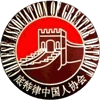The Chinese community has a long history of migration and settlement around the world. Its membership varies widely, from impoverished working class people living in Chinatowns to well-educated upper-class citizens who live in suburban neighborhoods.
Some early immigration patterns were heavily influenced by discriminatory policies, such as the Chinese Exclusion Era (1882-1943). This has had lasting effects on community formation and cultural identity.
Origins
Early Chinese immigrants developed various strategies to preserve their culture and heritage while integrating into American society. They established clan, regional, fraternal, and commercial associations. They also started Chinese language schools to offset the lack of Chinese instruction in American mainstream schools.
During the gold rush, Cantonese men immigrated to California and worked long hours in mines, small businesses, and construction of the transcontinental railroad. But with growing legal discrimination and virulent nativism, they began to seek better opportunities elsewhere.
The first wave of Chinese Americans settled mainly in California and New York. They also formed a handful of Chinatowns around the United States. These communities became multi-generational and established community organizations, cultural festivals, and language schools. In addition, they embraced Western-style dress and adopted American names.
Ethnicity
China is a nation of many different ethnic groups, and each has its own distinct culture and language. The Chinese government officially recognizes 56 ethnic nationalities, or minzu.
In America, Chinese American populations can be found in many major cities, including San Francisco and Los Angeles, as well as smaller pockets in rural towns and university-college towns throughout the country. These communities vary widely in their economic and social status. Poor Chinese Americans usually live in urban Chinatowns while well-educated upper-class Chinese reside in affluent suburban areas.
Historically, most Chinese immigrants in the United States were men who came to work for gold and silver during the California Gold Rush and other mining operations. They often settled in ethnic neighborhoods, known as Chinatowns, where they could maintain their language and culture.
Language
Linguistically, Chinese are not a single language but a broad family of related dialects that include standard Mandarin (Putonghua), Cantonese and Yue, Hokkien, and Shanghainese or Wu. These languages are mutually unintelligible, but share a common written character system based on pictographs and ideographs with one separate character for each syllable of the spoken language.
Most of the part time “heritage” language schools set up in America’s Chinatown communities by educated immigrant parents from Taiwan and Mainland China are taught in their respective dialects. These schools are also largely staffed and supported by these parents. These programs also promote cultural immersion, fostering connections to heritage and providing opportunities for intergenerational learning. Moreover, they enable learners to experience firsthand the traditions of the Chinese community and foster a genuine appreciation of another culture.
Religion
Unlike in monotheistic traditions, Chinese popular religion lacks a centralized hierarchy and has no canonical scriptures. Instead, it is diffused in practices that define microcosms of the family (nuclear and extended), the kins or lineages of clans, and professional guilds.
Folk religious temples are present in 19% of neighborhood committees, and are often dedicated to local folk deities, national heroes, trade gods or other so-called tutelage or protector gods. These sites also often house Buddhist or Taoist figures.
China is one of the world’s largest Buddhist countries, and has an estimated population of up to 362 million people who practice Buddhism or Taoism. But beliefs in Buddha and a bodhisattva, spirits and/or fengshui and immortals overlap considerably, and most Chinese do not adhere to any one of these belief systems exclusively.
Festivals
Chinese festivals reflect mixed religious traditions, honor ancestors and mark the passage of seasons. They are a time for families to come together through ceremonies, eating and socializing.
Spring Festival is the main festival and usually falls around January or February. It’s a celebration of the new year, worshipping ancestors and exorcising evil spirits. It’s also a time for cleaning houses and shopping for red couplets, lanterns and flower pots.
Dragon Boat Festival is a time to remember Qu Yuan, the patriotic poet. He drowned himself out of loyalty to his state, Chu. It’s a festival of love, too and is a day when young people raise their hopes for a good marriage. Traditions include hanging mugwort at the door and drinking realgar wine.
